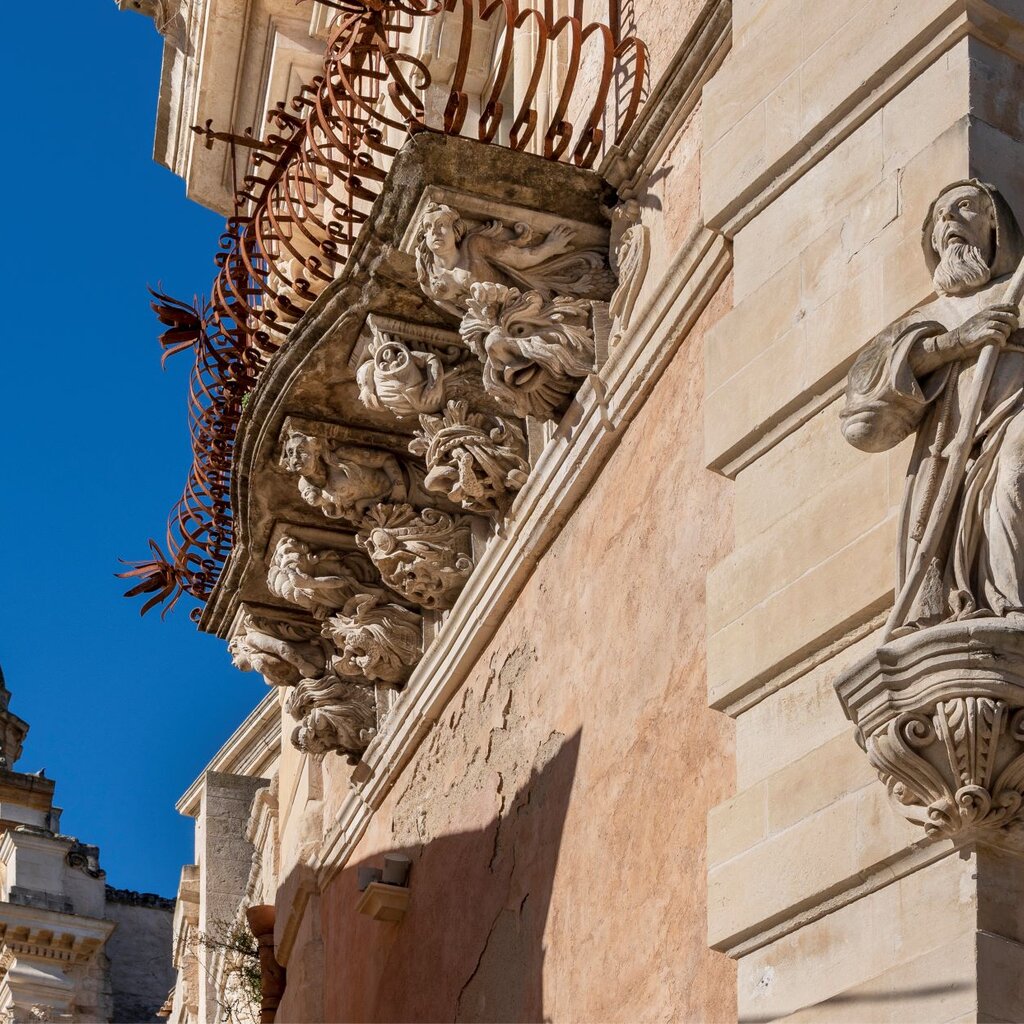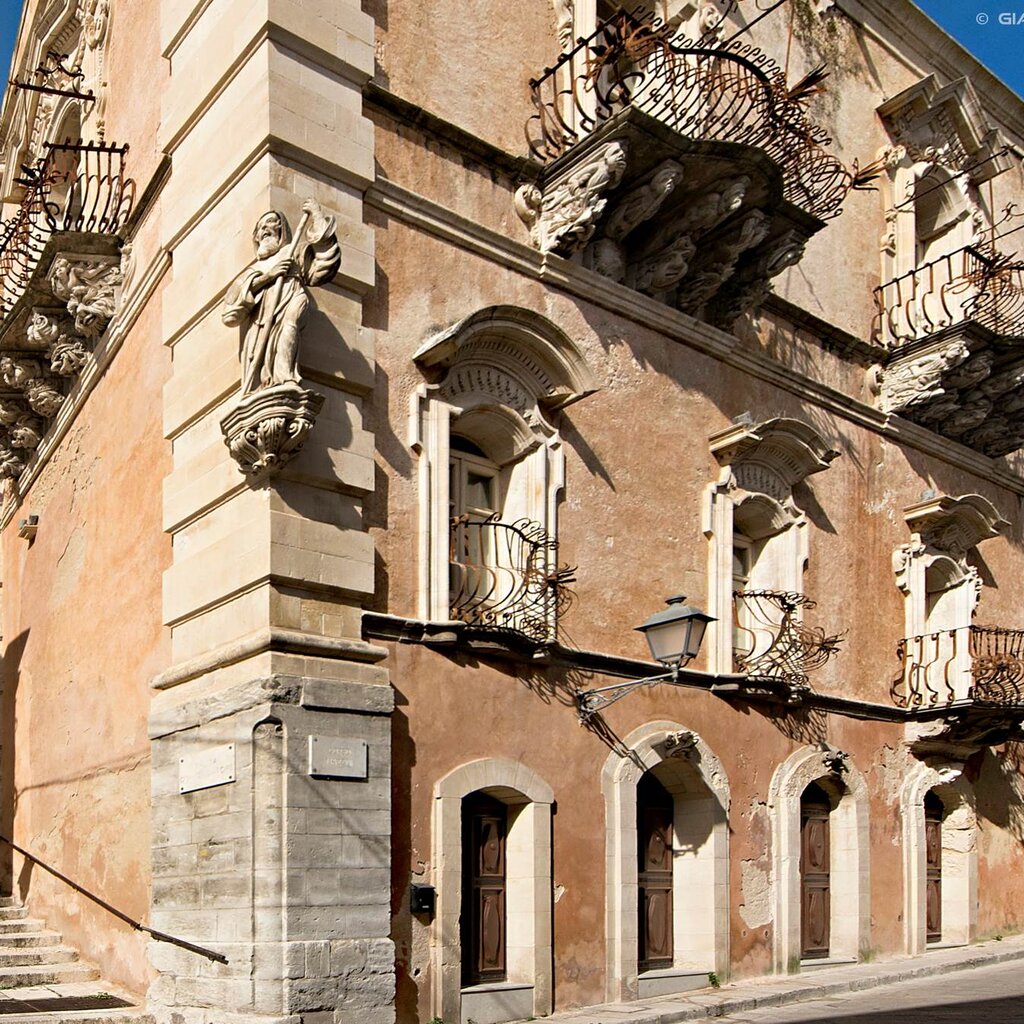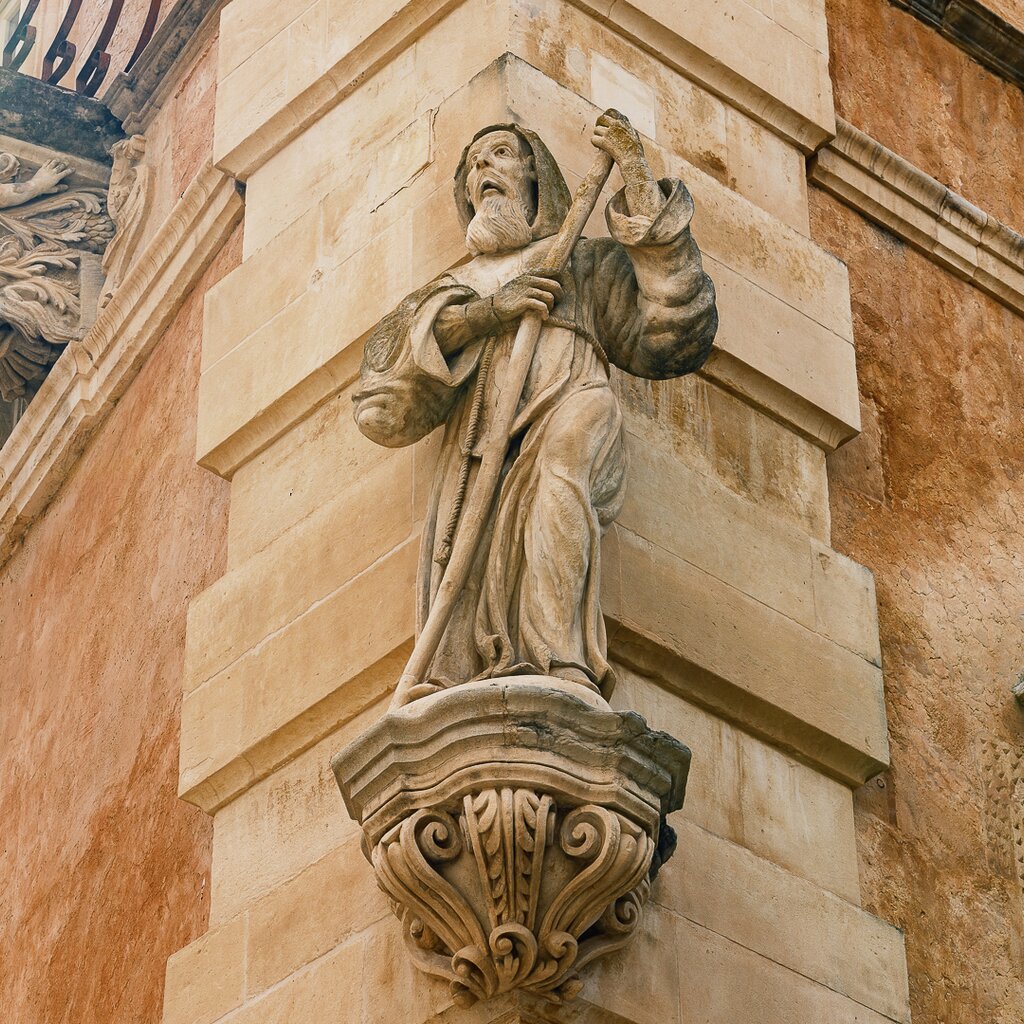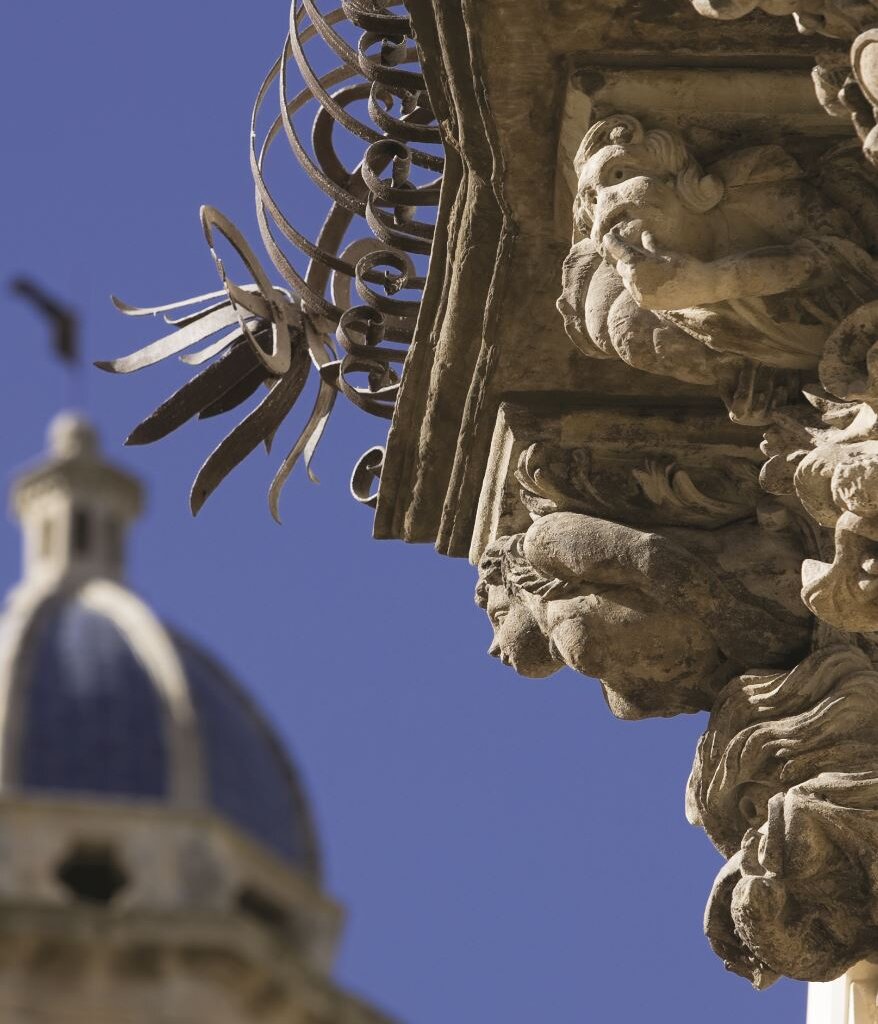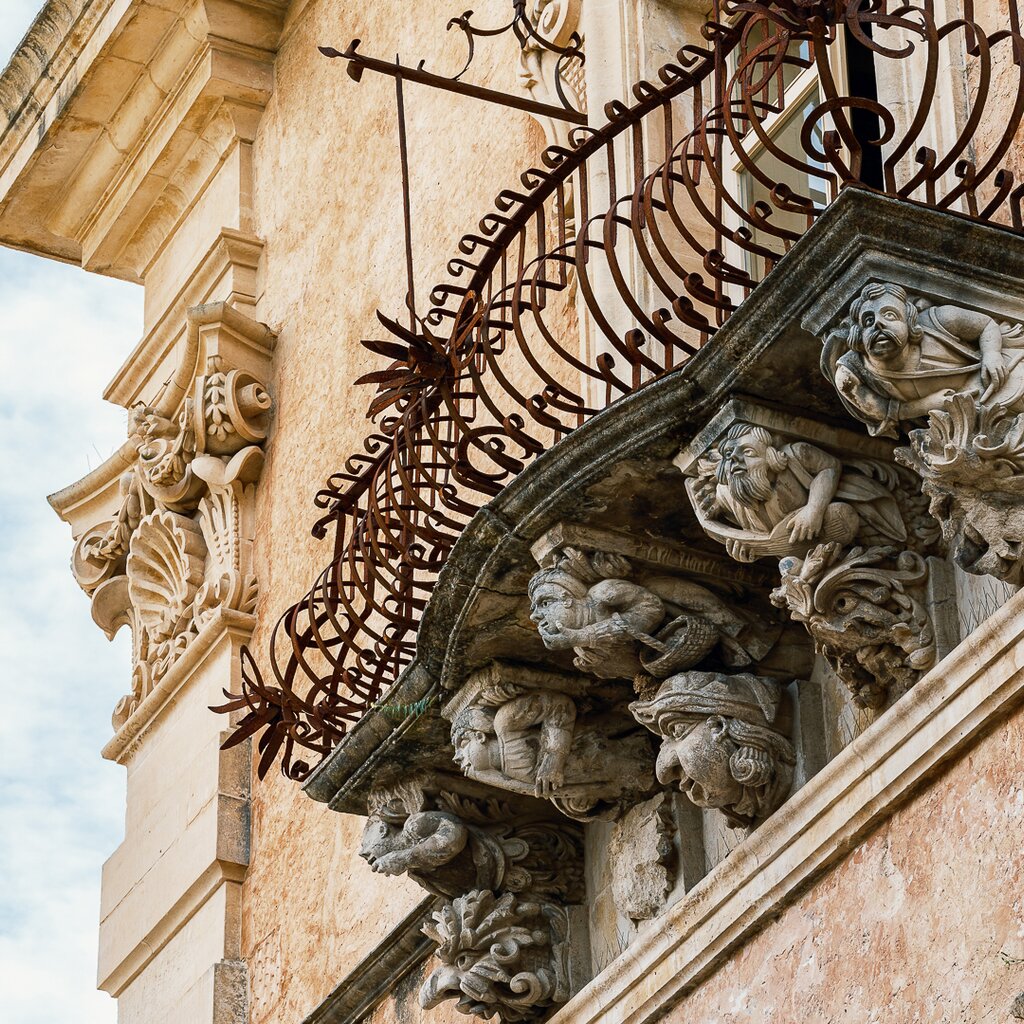Many pilgrims and other travellers would have arrived here, at the gates to the walled city, marked by the church of the purgatory. This is why the exterior of the Palazzo is decorated with a statue of one of the protectors of travellers, Saint Francis of Paola, who is said to have miraculously crossed the Strait of Messina by sailing on his own cloak.
The palace features numerous balconies decorated with “masks”, elaborate corbels which are typical of the late-baroque style. The narrowest end of the building features a balcony with five corbels which are the original masks of the city: human or plant-like faces holding animals in their mouths such as a snake or a scorpion, symbols of malicious gossip, above which are cherubs with heaving bosoms and cornucopias full of fruit, representing the owners' wealth.
The main façade has three balconies which depict scenes from everyday life, such musicians, taverns, and extravagant riches. It is thought by some that the central figure below each balcony, who is always depicted with well-defined physical features, may be a caricature of a member of the Cosentini family. Palazzo Cosentini regularly hosts exhibitions and small events.
